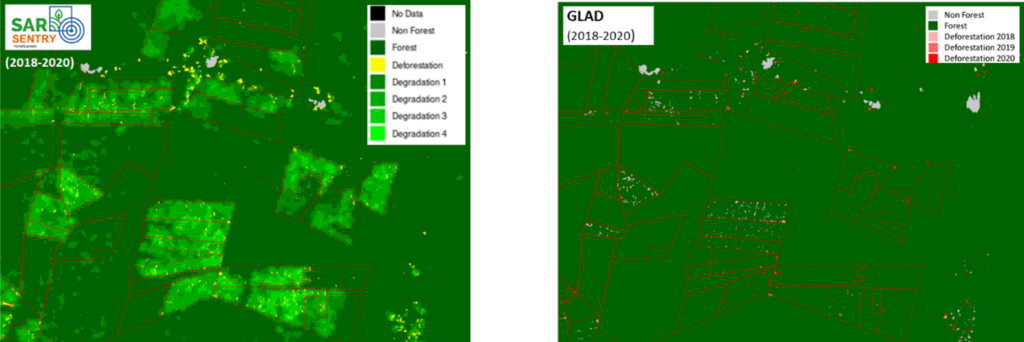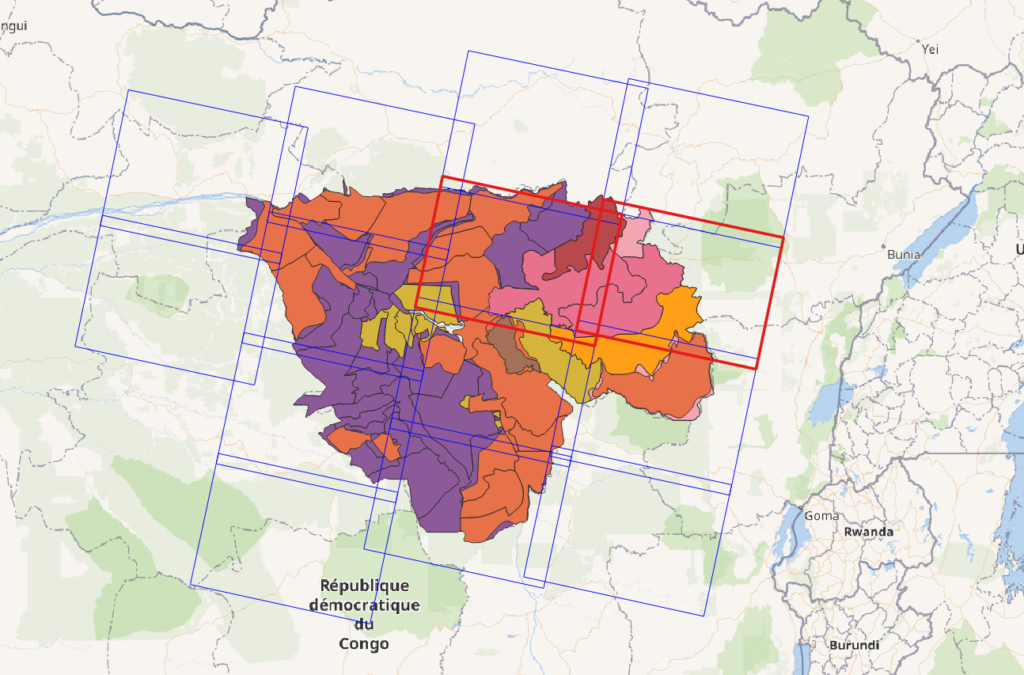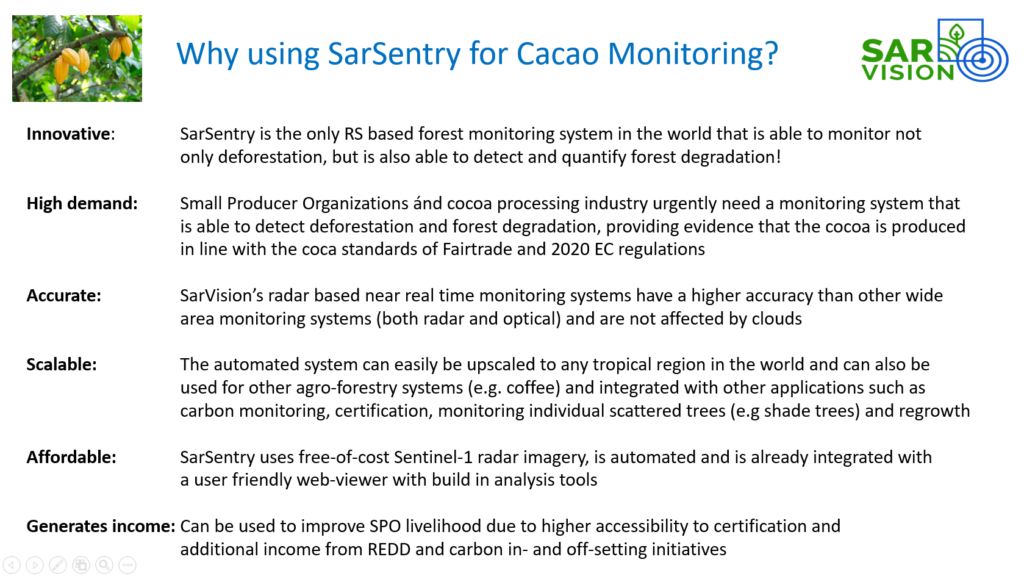Cacao monitoring
Consumers and producers of cocoa products increasingly recognize the importance of sustainably produced cocoa for the preservation of biodiversity, climate mitigation and adaptation and long-term productivity. Cacao originates in under shade trees, but currently worldwide, 31% of cacao grows in shade in plantations within agroforestry systems. Cacao is mainly grown by small farmers (<5ha), and worldwide there are an estimated 10 million cacao farmers who produce cocoa on 10.2 million hectares (about 4.47 million tons).
Monitoring forest degradation among agroforestry cacao plantations is difficult because with optical Remote Sensing monitoring systems it is difficult to get a picture of what is happening under the forest canopy. However, this information is an important indicator for the sustainability of cocoa production and to determine if the cocoa is in line with the EC regulations of the year 2000. Both the producers of sustainable cocoa (usually small farmers) and the processing industry have a great need for monitoring systems that can show whether a cocoa plantation has caused or is still causing deforestation and forest degradation. With this information, farmers who produce cocoa in a sustainable way can be more eligible for certification and income from REDD projects.
The cocoa industry is currently spending a lot of money to guarantee the sustainability of their production chain. Until now, demonstrating the sustainability of cacao farms has been a costly and time-consuming task because this is almost only possible on the basis of local inspections. However, the groundbreaking SarSentry forest monitoring system recently developed by SarVision makes it possible for the first time to detect and quantify forest degradation under the forest canopy using Sentinel-1 radar images. SarSentry is the only operational forest monitoring system in the world that can do this.

Sustainable Cacao Monitor project in Congo-DRC
SarVision is currently implementing its SarSentry system in the Tshopo cacao plantation area in Congo-DRC in collaboration with Tropenbos-DRC.
The Sustainable Cacao Monitor project is funded by the Netherlands Space Agency NSO. Results of the SarSentry monitoring system will be shown to cacao farmers and the cocoa processing industry. Stakeholders with mobile phones or laptops can view the results via SarVision’s webviewer and analysis tool, but results will also be shown by staff of Tropenbos-DRC, either with help of their equipment or with help of simple hardcopy maps. The results will be integrated with current programs by Tropenbos-DRC: Working Landscapes program, Green Livelihoods program and the Integrated REDD+ program. Part of these programs is to promote sustainable cocoa production in agroforestry systems to reduce deforestation and forest degradation in the area and improve farmers’ livelihoods.
The project goals are:
1. Mapping the degradation intensity of agroforestry cocoa plantations in the Tshopo region
2. Improving the livelihood of small-scale cocoa farmers in the Tshopo region
3. Making Sentinel-1 radar data and other open access geodata more accessible via SarVision’s web viewer and mobile app
4. Promoting more sustainable cocoa production to preserve the forest in the Tshopo region
5. Demonstrating that the application of SarSentry for monitoring sustainable cocoa has commercial potential



